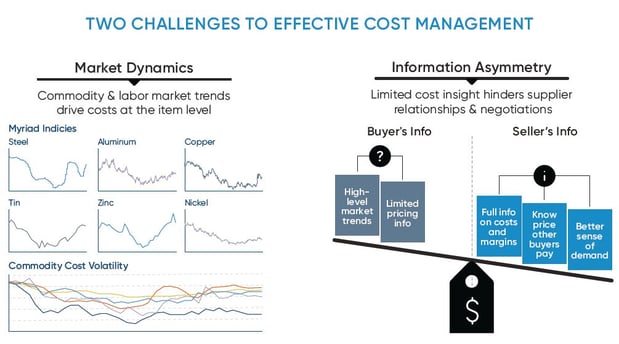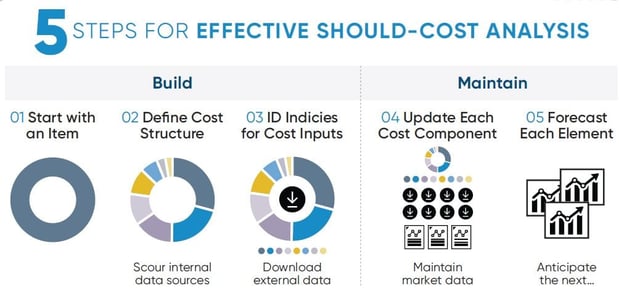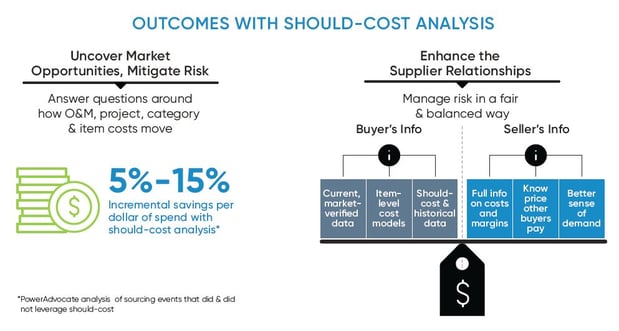Do you manage a utility supply chain, procurement process, or supplier relationships? Or collaborate with and depend on teams that do? If so you know how heavy a lift it can be to effectively manage asset-intensive energy sector costs. Should-cost analysis helps address two key challenges that get in the way of delivering even more value for your organization.
Two Challenges
There are two overarching challenges to effective cost management:
Market Dynamics: It’s a complex world of global supply chain networks, commodity volatility, and labor market shifts. Various trends drive the costs of what you buy at an item level.
Information Asymmetry: Buyers tend to have limited cost isnsights, at least less insights than sellers. This hinders the ability to have more effective supplier relationships and negotiation outcomes.

Should-cost analysis addresses both challenges. It helps you navigate cost complexity, have information on-par with suppliers, and deliver more value by:
- Providing transparency into cost drivers or equipment, materials and services
- Building deeper, data-driven insights that inform decision-making
- Enhancing supply chain’s strategic position within the enterprise
Five Steps to Insight
Should-cost analysis helps get at the insight into cost structures and drivers needed to stay ahead of market opportunities, mitigate risks, and enhance supplier relationships.
This analysis involves gathering, connecting, and assessing internal and external data. It sheds light on which inputs significantly affect item costs and to what extent. And each element of the resulting cost model is then tied to indices that track market movements.
Take a look at our infographic for an overview of the 5 Steps for Effective Should-cost Analysis.

Creating Value
A should-cost approach helps supply chain create price- and total cost of ownership (TCO)-focused value. PowerAdvocate analysis of sourcing events found that events that leveraged should-cost analysis had 5-15% incremental savings per dollar of spend.
There are a number of applications for should-cost modeling and analysis, including:
- Procurement and strategic sourcing
- Supplier relationship management
- Category management
- Budgeting and planning
- Capital project escalation

Regardless of where an organization may be on the supply chain maturity curve, knowledge of commodity and labor market trends – tracked over time – builds a deeper understanding of how costs should move with the market.
Download our eBrief Navigate Cost Complexity with Should-cost Analysis to see how a PowerAdvocate customer realized 12% savings applying steel market should-cost analysis.
Getting to Scale
Should-cost modeling itself is a straightforward process. It takes staying on top of various indexes, cost structure data, and forecasting models to do it well.
Delivering deeper, on-going value at scale can be a bit trickier. Fortunately an efficient, scalable should-cost approach is possible thanks to advances in cloud-based cost data and analytics, automated index updates and calculations, and built-in forecasting capabilities.
Dig deeper into how to approach should-cost. Check out our past posts: Tactical Savings Guide: Should-Cost Analysis, Savings through Should-Cost: Building Savings Roadmap, and Should-Cost: The Most Effective Supplier Negotiation Tool You Likely Don't Use
Want to learn more about putting Should-cost Analysis to work for you?

